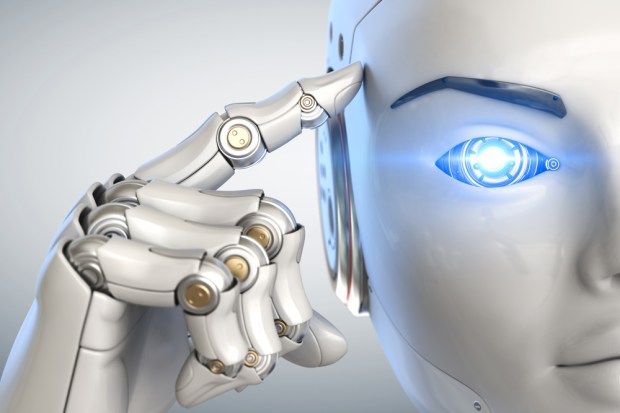Time To Up The IQ On Artificial Intelligence

What’s so intelligent about artificial intelligence if it needs human data scientists to hold its hand through every little function? It may sound like a harsh critique, but Brighterion founder, president and CEO Akli Adjaoute, wouldn’t call such a platform “AI” at all. The term gets thrown around much too loosely, Adjaoute said. In this first of a six-part series, here’s what he tells Karen Webster “AI” really means, and where he feels data scientists should be investing the time they’re currently spending to micromanage AIs.
Rome wasn’t built in a day, and neither were planes, trains or cars. So, why would something as complex as artificial intelligence (AI) have cropped up overnight?
The answer is, it didn’t. The technology originated in the 1950s, when the term “artificial intelligence” was first used by math professor John McCarthy. Even then, terms and ideas such as Bayesian networks, data mining and neural networks were already making their debut. Early artificial intelligences were built on the foundation of statistics, just as they are today. By the 1970s, the MYCIN AI program was diagnosing blood infections with better accuracy than doctors.
Yet it seems AI has only really gone mainstream in recent years. Why is this? Akli Adjaoute, founder, president and CEO of artificial intelligence and machine learning technologies provider Brighterion, told Karen Webster in a recent episode of the “In Their Own Words” podcast series that the main difference between then and now is scale. Today, he said, there is much more computing power and much more data available to feed into AI systems.
Little has changed other than that, according to Adjaoute. Legacy AI and data scientists are still focused on statistics, neural networks, data mining and deep learning, just as they were almost 50 years ago. Yet those same technologies are being hawked and hyped today as if they had just been created.
Adjaoute believes it is time for data scientists to just let AI do its thing — which is much more than what it has been doing, he noted, and would free up those legacy AI and data scientists to focus their efforts where they are more needed.
Many fraud and risk experts say AI can only do part of the job when it comes to mitigating those threats, and, after a point, humans must step in. But Adjaoute believes AI is capable of doing the whole job if we let it, and a system that can’t does not deserve to be called “AI.”
“The majority of solutions you have in the market are based on [rules] written by experts,” said Adjaoute, “but they apply the same logic to everyone. They have high false-positives. To protect consumers and avoid friction while protecting them, you need technology that learns the behavior of each cardholder — with privacy protection in place, of course. Real artificial intelligence and machine learning can solve these issues.”
Fraudsters work around the rules. The problem, Adjaoute said, is that consumers aren’t always predictable when it comes to behavior. They travel, for example, and they do different, atypical activities on special occasions.
He believes artificial intelligence is the way to address this through predictive analytics. True AI, Adjaoute said, offers personalization. It’s self-learning and self-adaptive. It doesn’t just learn from the past; it detects anomalies in real time. An AI such as this would be more than capable of fighting fraud all on its own, he explained.
“If you have AI, but it only works for one problem, where is the intelligence there?” Adjaoute said. “When you really do AI, you need a platform that works with any data in any format from any source, and the AI platform must do that automatically. It must have the capacity to analyze, discover, create new fields, enrich data and automatically design models. You don’t need a team of data scientists working for months. When you have AI-as-a-Service, and when you offer it as a service, the AI itself should do all that.”
With a true AI, said Adjaoute, the same predictive analytics platform can be applied across fields — including financial services, fraud, payments, healthcare and homeland security, to name a few — and for many different uses — such as forecasting market volatility and manipulation, predicting market movers and trades, risk assessment, fraud prevention or detection and anti-money laundering compliance, among others.
Webster made the following remark: “I think you just broke the hearts of a lot of parents who sent their kids to school to become data scientists,” she said. “What’s the role of human beings in monitoring what platforms are doing and learning, and in teaching platforms to be smarter?”
The good news is that people will always be needed to help machines learn from their mistakes and to apply the AI platform in different fields. After all, Adjaoute said, everything is going to become software, and the future of software is artificial intelligence. Netflix ousted Blockbuster, and Google just keeps getting bigger. Cars and other everyday objects are rapidly being connected to the Internet of Things.
Yes, people will be needed, and probably more people than before, Adjaoute predicted. What they won’t need to do is create large teams just to monitor AIs.
“It’s not that I believe AI is more than human,” Adjaoute said. “It’s that there’s so much data that it’s impossible for us to look through it all and understand the relationships to find anomalies. The machine will do that for you. Data scientists are absolutely needed to make the technology and platforms better. If you have to hire a lot of data scientists to do something, then it’s not artificial intelligence.”
Brighterion’s Akli Adjaoute and Webster will dive into the application of AI-as-a-Service and the essence of what it means to have intelligence built into software in upcoming episodes of the “In Their Own Words” podcast — stay tuned!
